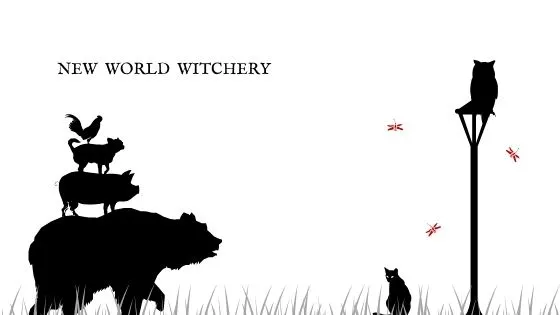A caveat before I begin today’s post: Walpurgisnacht is not terribly “New World.” Most of it will be related to the British Isles and Europe, though I will include a little bit on New World practices, too. But I think it’s still relevant to witchery, so I’m going to write about it anyway. Mostly because, well, I really want to.
This is quite possibly my favorite witchy holiday, with the conditional exception of All Hallows/Halloween. I do like May Day/Beltane celebrations, of course, but the night before is really what I love. The association of this night with witchcraft seems to go back a long way. The name of the holiday comes from a Catholic Saint who died in the year 777 C.E, St. Walburga. Rosemary Ellen Guiley, in her Encyclopedia of Witches & Witchcraft, says this about the holiday:
“In the Middle Ages, Walpurgisnacht, or Walpurgis Night, was believed to be a night of witch revelry throughout Germany, the Low Countries and Scandinavia. Witches mounted their brooms and few to the mountaintops, where they carried on with wild feasting, dancing and copulation with demons and the Devil…In Germany, the Brocken, a dominant peak in the Harz Mountains, was the most infamous site of the witch sabbats…[S]o common was the belief in the sabbats that maps of the Harz drawn in the 18th century almost always depicted witches on broomsticks converging upon the Brocken” ( EW&W, p.347)
What shifted the focus from holy martyrdom and sainthood to witch-filled revels? Well, there’s no single reason why that I’ve found, but the date is directly opposite Halloween in the calendar year, so that might have something to do with it (what, you thought witches would be content with one night of fun a year?).
There are lots of stories about this night. One from the Isle of Man between Scotland and Ireland tells the story of two witches and their (mis)adventures on Old May Eve. Dennis Wheatly’s occult novel The Devil Rides Out features a Walpurgisnacht ritual rather prominently, as it does in Goethe’s Faust tragedy. The scene at the end of the original Fantasia film featuring Mussorgsky’s “Night on Bald Mountain” also makes heavy reference to the revelries of Walpurgisnacht (I think I mentioned this in the Media Episode, too). There are also many unusual traditions associated with this night. When I was living in Prague, they had a tradition of building huge bonfires on hilltops on this night, and burning brooms or effigies of witches to keep evil spirits at bay, for example (it was really more of an excuse to drink around the bonfire). Vance Randolph, in his Ozark Magic & Folklore, describes an Ozark tradition for May Eve:
“On the last night of April, a girl may wet a handkerchief and hang it out in a cornfield. Next morning the May sun dries it, and the wrinkles are supposed to show the initial of the man she is to marry. Or she may hold a bottle of water up to the light on the morning of May 1, just at sunrise, and see apicture of outline of the boy who is to be her husband” (OM&F, p.176)
My personal practice incorporates a storytelling bent, and there’s one story that I turn to every year as part of my Walpurgisnacht ritual. “The Horned Women,” as recorded by Lady Wilde (in a collection with many tales also recorded by W.B. Yeats which I’ve mentioned before—Fairy & Folk Tales of the Irish Peasantry), is not explicitly about this wild night. Yet certain elements—the assembly of a coven of witches, and the prominent mention of a mountain where they revel, especially—have always called to mind this tale in relation to May Eve. I glean much in the way of magic from this story, and incorporate things from it into my workings (such as the use of “feet water” to guide all harmful forces away from my home).
Walpurgisnacht doesn’t register on everyone’s radar. Some are definitely drawn towards the Beltane side of this holiday, and I rather love that celebration, too. But Walpurgisnacht will always have a special place in my heart. There’s no night I more earnestly wish I could climb on a broomstick and sail off into a moonlit sky than this one.
Thanks for reading!
-Cory


Wonderful bits of lore, thanks for sharing! Fairy and Folk Tales of the Irish Peasantry is one of my favourite books to turn, a very helpful book indeed.
I hope you enjoy your evening!
Slàinte!
Laurel
Many thanks, Laurel! I find I turn to that book over and over again. There’s so much just beneath the surface of those stories. At least in my opinion.
Thanks for your comment!
Cory
I love this post, thanks so much for sharing. I learn new things from your blog all the time.
– Caitriona 😉
Arigato Mina-chan! 🙂 That may be one of the highest and best compliments I could ever receive!
Thanks so much!
Cory